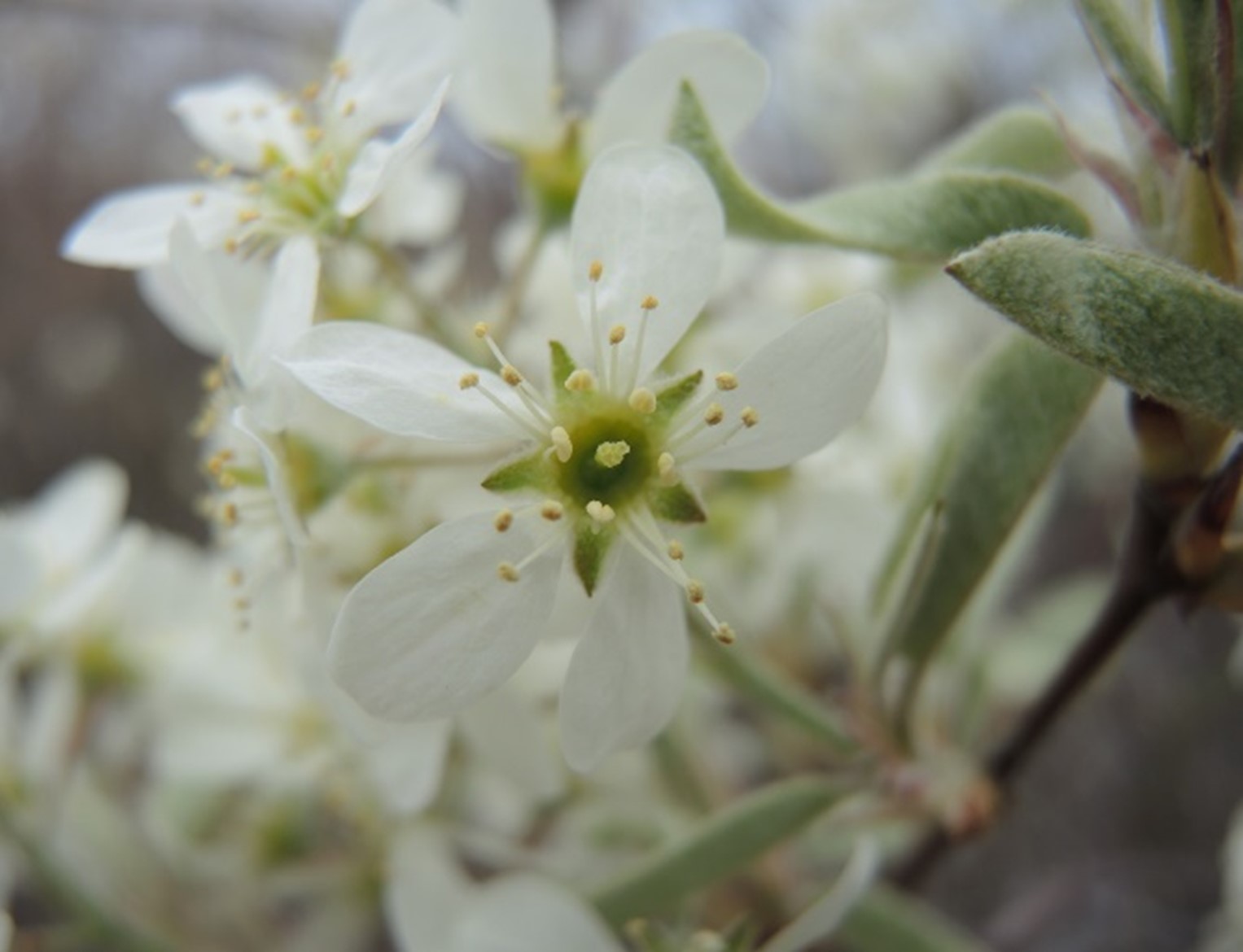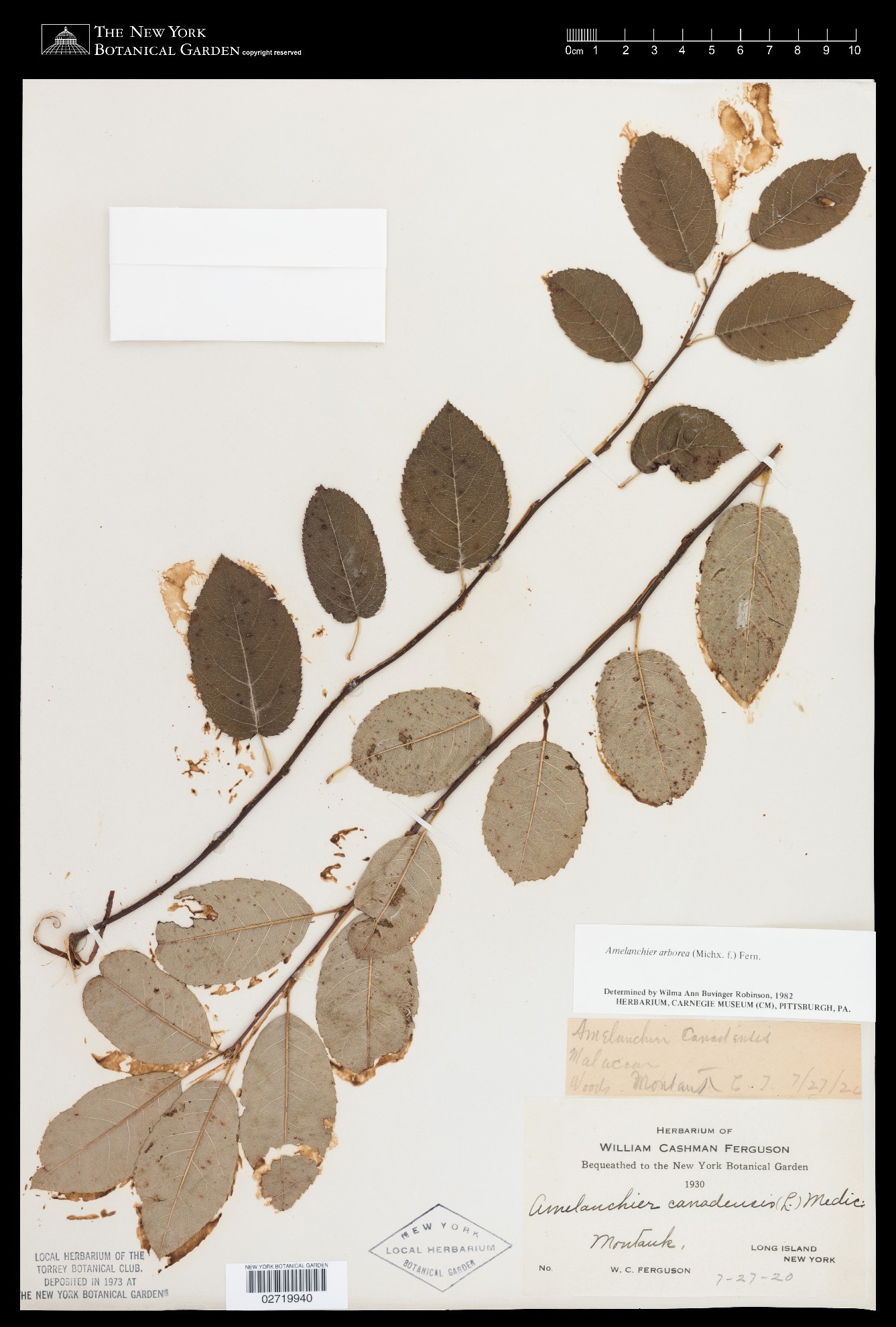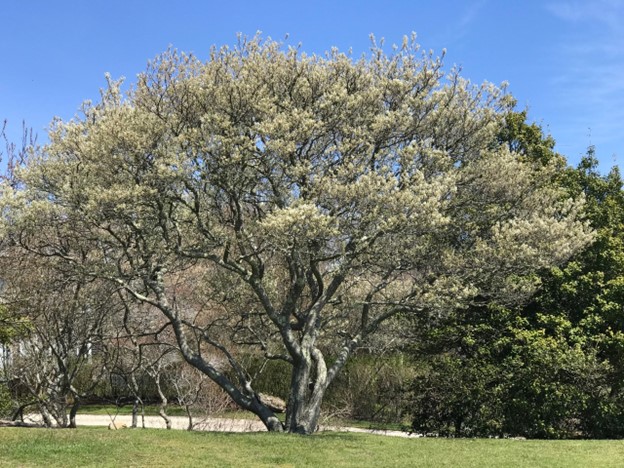
What’s not to love about shad trees, which will soon be gracing the skyline with their gorgeous white tufts?
There are four species of shadbush growing in Montauk, one of which is very rare. The shadbush is a member of the rose family that goes by many other names: shadblow, shadwood, serviceberry, juneberry, Amelanchier, wild plum, sugarplum, chuckley pear, saskatoon…

The tough and often twisted-trunk native woodlanders are called “shad” because shad, a once-abundant freshwater fish, would do their spawning while the trees were in bloom. Colonists called them serviceberry trees because the early-spring blossoms meant the ground had thawed enough to bury people who had died over the winter.

Illustration from An Introduction to Trees and, right, a photo of juneberries by Victoria Bustamante.
Shad berries ripen in June: “Native Americans mixed the berries with meat (deer, moose, buffalo, or bear) and fat to make pemmican, a portable food that functioned like protein bars,” according to a “Tree of the Month” column by the Shelter Island Friends of Trees. “’Take some juneberries with you’ was a common saying among the Chippewa.”
Many native tribes also used the plant for medicine and to make arrow shafts, Lewis and Clark are said to have survived on them at one point, according to the New York Botanical Garden – which, by the way, has a shadbush specimen collected in Montauk in 1920.
 Shadbush branches and leaves collected in Montauk in 1920. | Courtesy of the New York Botanical GardenShadmoor State Park in Montauk was named for its abundance of shad trees as well as its moorland terrain. The 99-acre preserve, with its hiking trails, bluffs, and dramatic ocean views, was temporarily elegized as “Shadless” in the early 1980s when speculators tried to put 66 house lots there. To this day home builders often sacrifice native trees, including the shad, to clear-cut lots and then re-landscape with non-native plants.
Shadbush branches and leaves collected in Montauk in 1920. | Courtesy of the New York Botanical GardenShadmoor State Park in Montauk was named for its abundance of shad trees as well as its moorland terrain. The 99-acre preserve, with its hiking trails, bluffs, and dramatic ocean views, was temporarily elegized as “Shadless” in the early 1980s when speculators tried to put 66 house lots there. To this day home builders often sacrifice native trees, including the shad, to clear-cut lots and then re-landscape with non-native plants.

A shad tree (which had already bloomed, having been preserved during expansion) was among the “dignitaries” at the library’s ribbon-cutting in May 2022.
The Montauk Library is fortunate to have a shadbush that was carefully preserved during the recent expansion, and is surrounded by others whose display of white floral crowns within days will be especially visible from the upstairs decks. Come visit us and have a look!





Reply or Comment